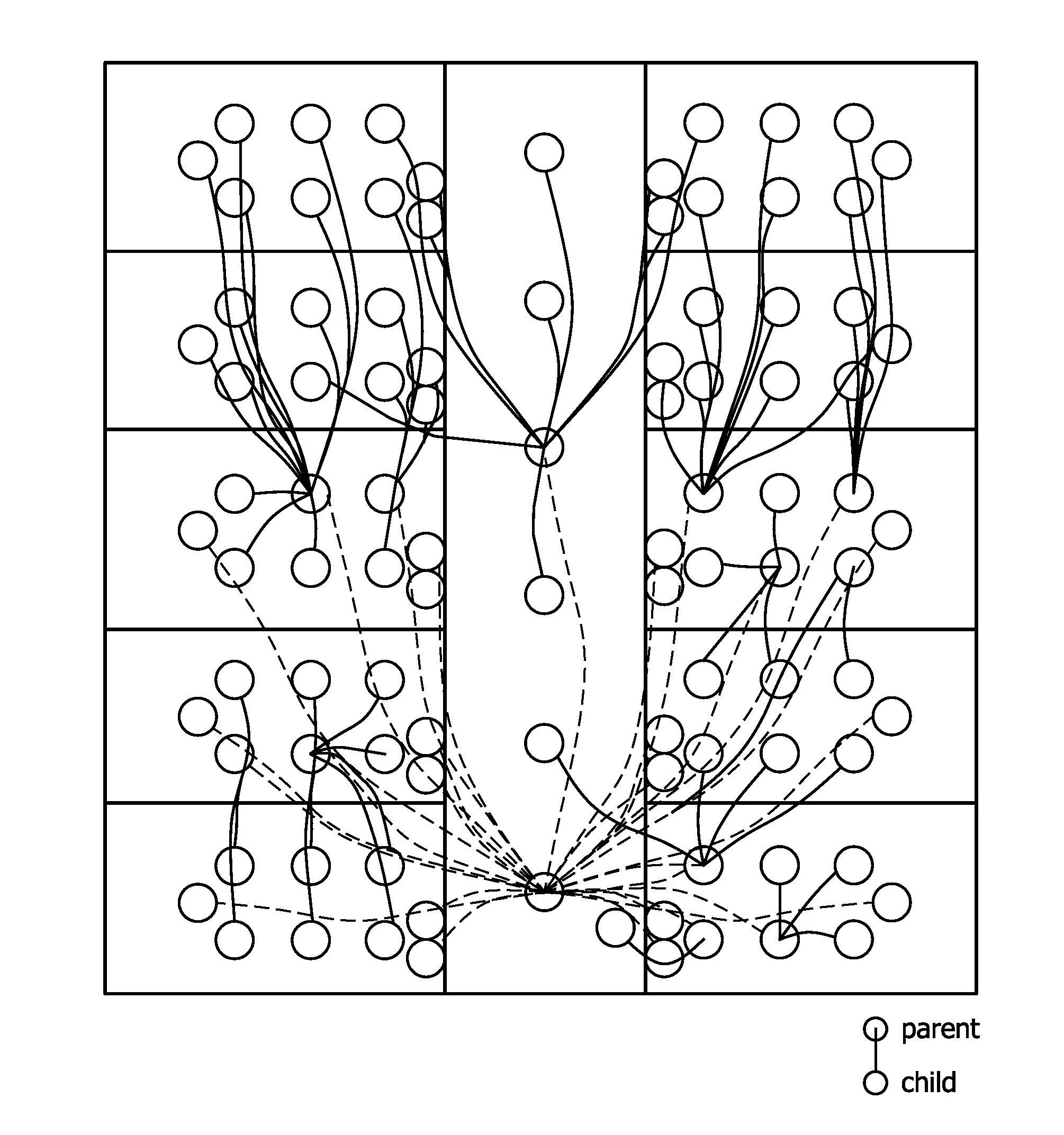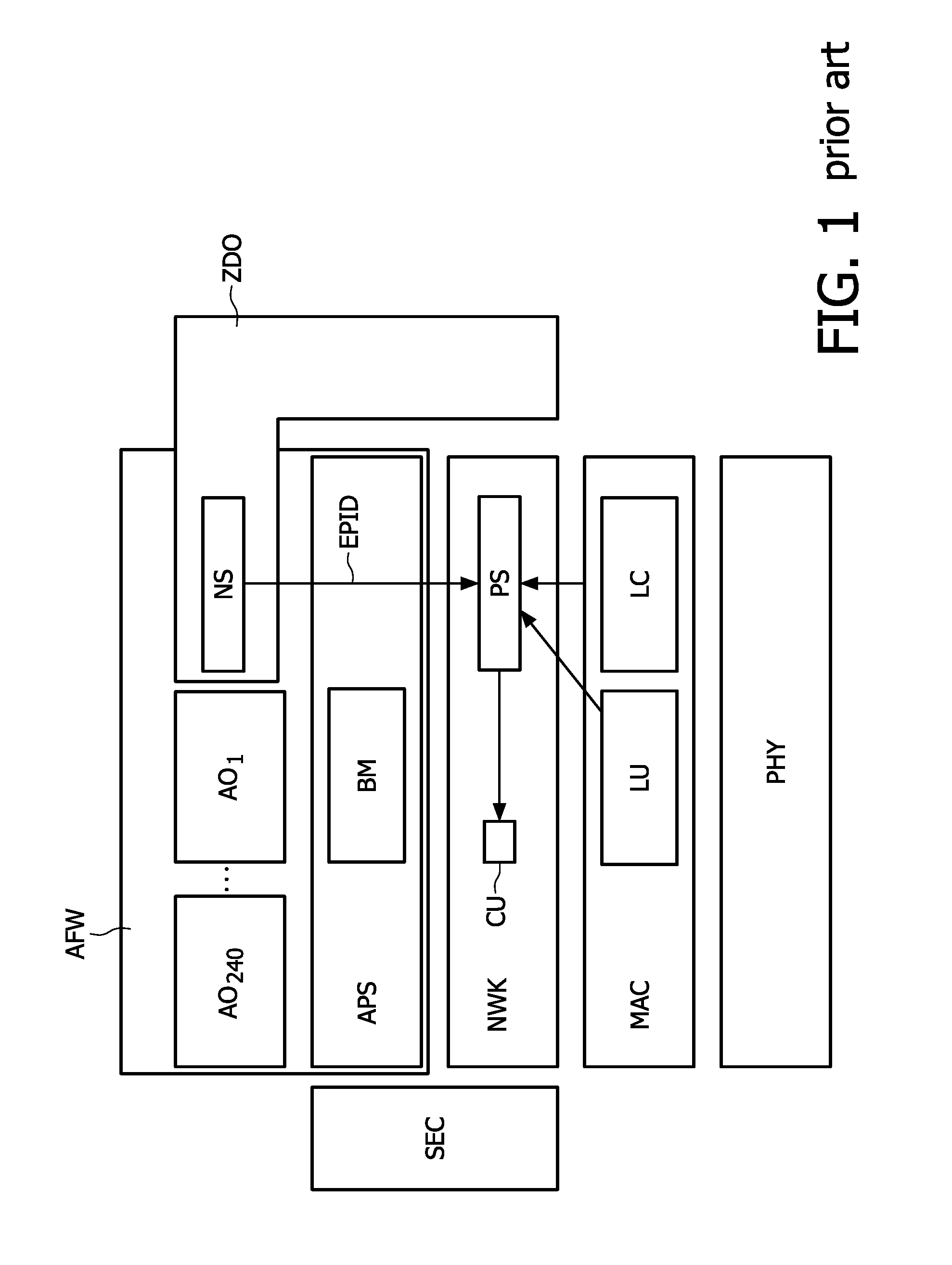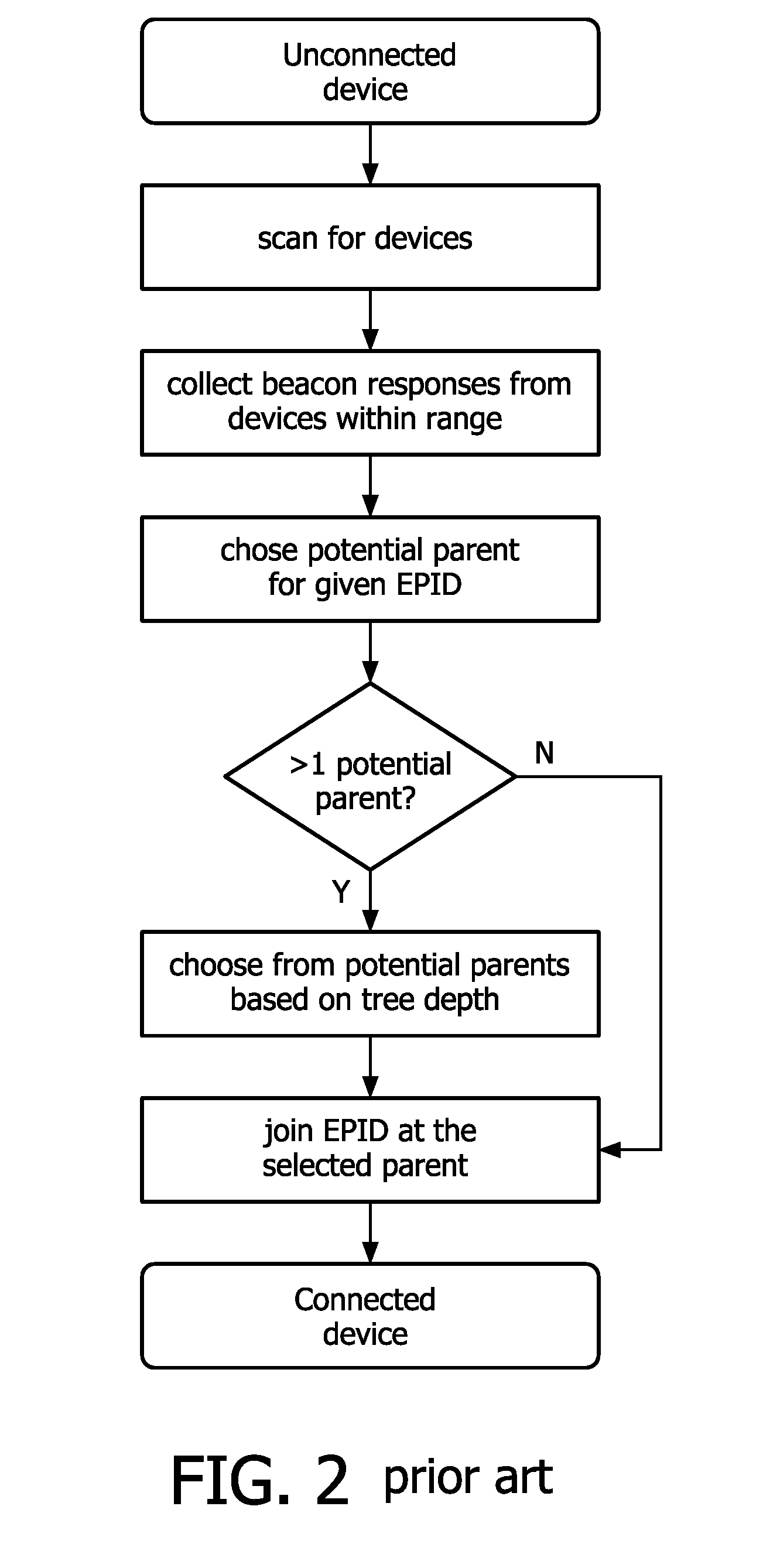Method of establishing a wireless multi-hop network
a multi-hop network and wireless technology, applied in the field of wireless multi-hop network establishing, can solve the problems of high maintenance effort, low network hop probability, and low user satisfaction, and achieve the effect of improving network performance, reducing the number of network hops required, and increasing the probability of delivering application messages
- Summary
- Abstract
- Description
- Claims
- Application Information
AI Technical Summary
Benefits of technology
Problems solved by technology
Method used
Image
Examples
Embodiment Construction
[0063]In the following, without restricting the invention in any way, it is assumed that the network is a ZigBee-type network since ZigBee is currently the most common wireless mesh networking standard. Nevertheless, the invention may also be used in similar multihop networks.
[0064]FIG. 1 shows a typical protocol stack of a ZigBee protocol. ZigBee devices are required to conform to the IEEE 802.15.4-2003 Low-Rate Wireless Personal Area Network (WPAN) standard. The standard specifies the lower protocol layers—the Physical layer PHY, and the Medium Access Control MAC portion of the data link layer. This standard specifies operation in the unlicensed 2.4 GHz, 915 MHz and 868 MHz ISM bands. The Network layer NWK is responsible for addressing and packet routing, providing end-to-end data transmission services to the higher layers of the protocol stack which are part of the Application Framework AF. The Application Framework AF includes an Application Support Sublayer APS, a number (up to...
PUM
 Login to View More
Login to View More Abstract
Description
Claims
Application Information
 Login to View More
Login to View More - R&D
- Intellectual Property
- Life Sciences
- Materials
- Tech Scout
- Unparalleled Data Quality
- Higher Quality Content
- 60% Fewer Hallucinations
Browse by: Latest US Patents, China's latest patents, Technical Efficacy Thesaurus, Application Domain, Technology Topic, Popular Technical Reports.
© 2025 PatSnap. All rights reserved.Legal|Privacy policy|Modern Slavery Act Transparency Statement|Sitemap|About US| Contact US: help@patsnap.com



